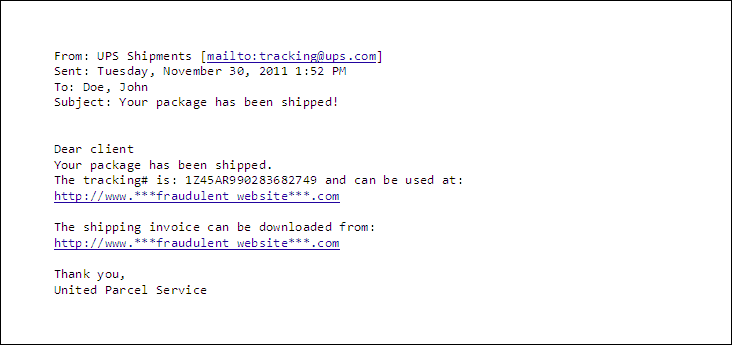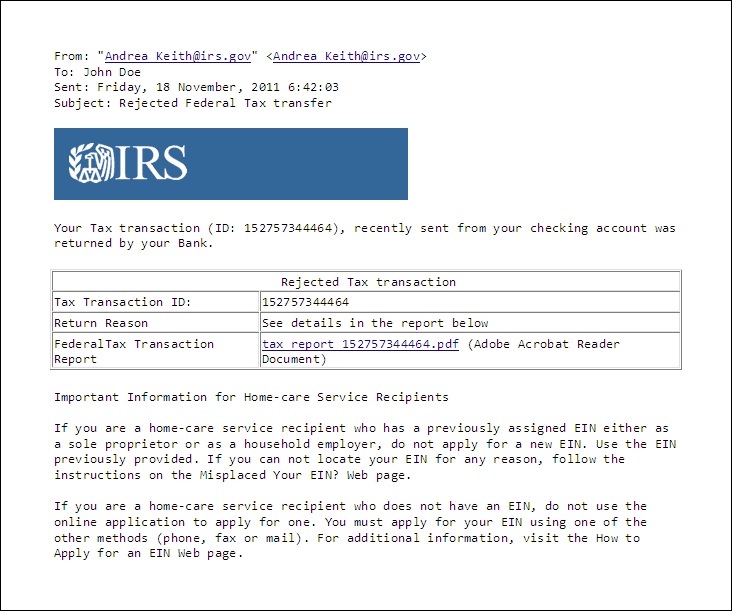January 2012 Phishing Alert
Although high profile news events such as the anniversary of the September 11th terrorist attacks are often used by phishers to take advantage of our curiosity, more often than not, phishing emails look like they came from an organization you already do business with such as your bank, UPS, the IRS, or the U.S. Postal Service, just to name a few. For this reason, it's important to always be on the lookout for emails that come from an unknown sender or that you were not expecting, or that appear to be suspicious or simply not quite right like the examples below.
Phishing Email Examples:
Example 1 (you might get an email like this despite never shipping a package)

Example 2 (you might also get an email like this despite never shipping a package)

Example 3 (these emails are often sent during tax season)

What You Need to Do
If you receive a suspicious email:
- Do not open or click on the links contained in the email.
- Do not open or download any attachments to the email.
- Do not respond to the email.
- If the message appears to be from Fifth Third Bank, forward it to 53investigation@security.53.com to help us track the phishers and shut down the fraudulent sites.
- Delete the message from your Inbox without responding to it.
- If you responded to the message and provided Fifth Third Bank account information, contact Fifth Third Bank Customer Service at 1-800-676-5869.
Tips and Tools to Help You
Education is your best defense – know what to look for and what to do. To find out more about how to protect yourself from fraud, visit the Fifth Third Bank Privacy & Security Center at www.53.com/security.